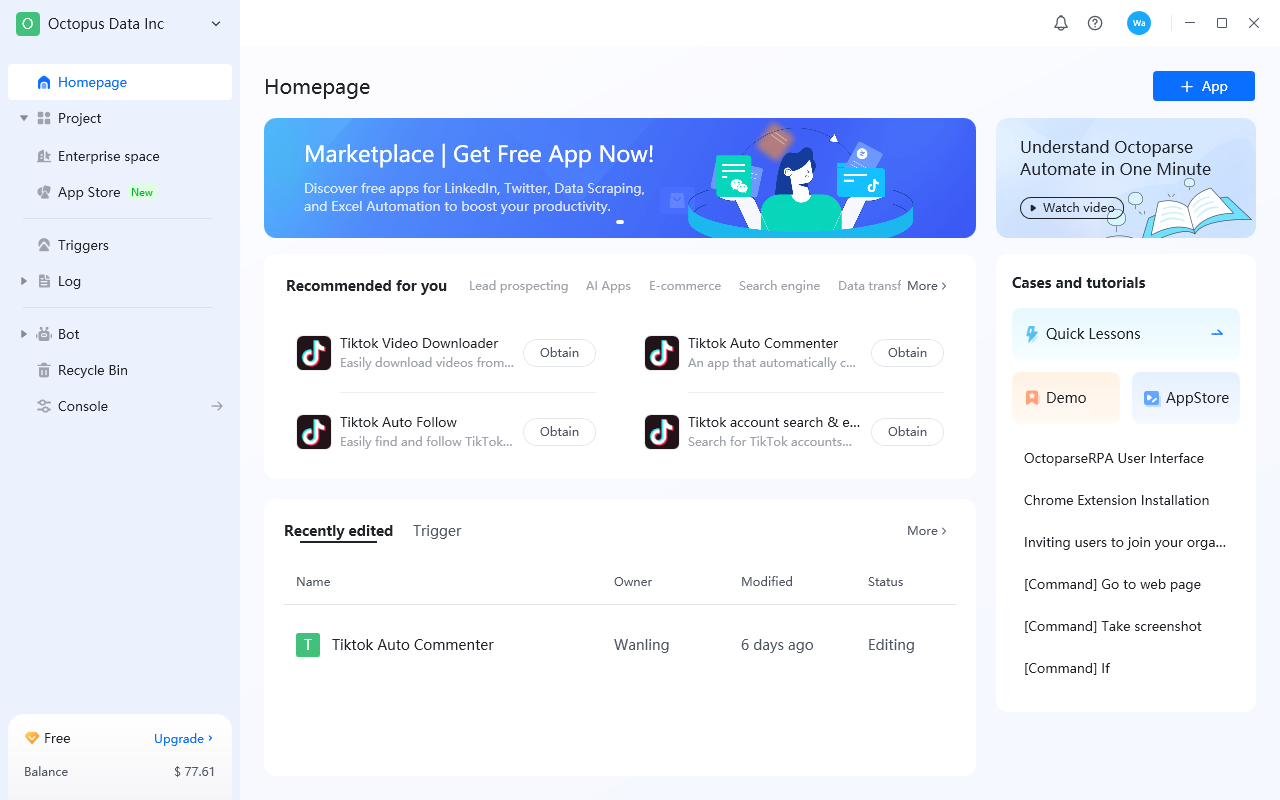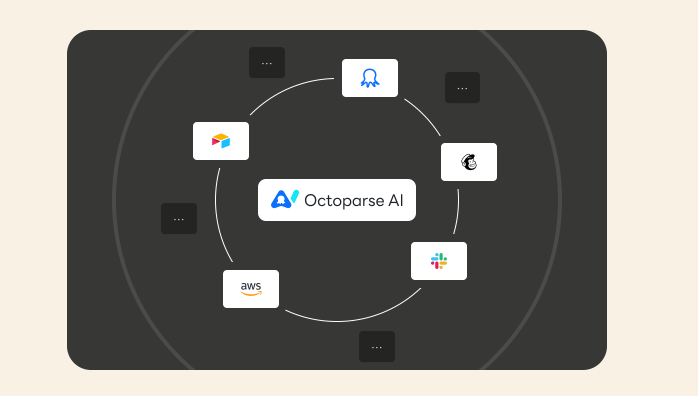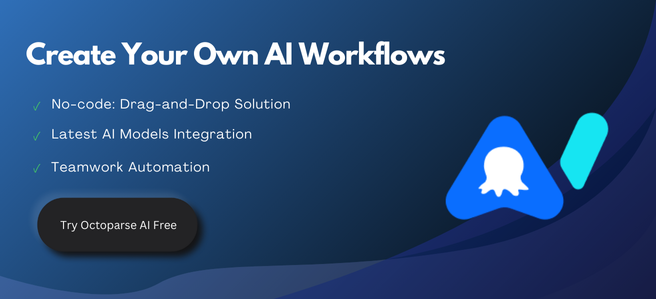In the healthcare industry, every second matters – and we’re not just talking about saving time here, we’re talking about saving lives. That’s why more and more hospitals and clinics are turning to automation tools (RPA) these days. It’s not just about cutting costs – though that helps – it’s really about making our jobs easier so we can focus on what truly matters: giving patients the best possible care. If you’re in healthcare, getting familiar with RPA might just be your ticket to working less on paperwork and more on people.
Healthcare teams always deal with endless paperwork and strict regulations. And they are also under pressure to keep patients happy. RPA helps by taking over repetitive, rule-based tasks (like data entry or billing) so staff can focus on what really matters: people. These “digital workers” never get tired and are available 24/7.
Want to see how RPA is changing the healthcare industry? Let’s look at some real-world examples—and how tools like Octoparse AI are leading the way.
7 RPA Use Cases Transforming Healthcare Operations
1. Patient Registration and Appointment Scheduling
The patient journey begins with registration and scheduling—processes traditionally plagued by inefficiencies. RPA Platforms now automate these workflows by:
- Extracting patient information from various documents and inputting it directly into your systems
- Verifying insurance eligibility in real-time, reducing claim rejections
- Managing appointment scheduling, including reminders and follow-ups
- Creating a seamless patient onboarding experience with minimal manual intervention
By automating these front-end processes, we’ve seen healthcare providers reduce patient wait times by up to 60% while minimizing data entry errors that can lead to billing discrepancies.
2. Claims Processing and Revenue Cycle Management
The financial health of healthcare organizations depends on efficient claims processing and revenue cycle management. RPA delivers remarkable improvements by:
- Automating claims submission and tracking
- Detecting and correcting errors before submission
- Monitoring claim status and following up on pending claims
- Reconciling payments against submitted claims
Healthcare organizations implementing RPA in their billing departments report up to 85% reduction in processing time and a significant decrease in denied claims. Your financial teams can focus on resolving complex exceptions rather than processing routine claims.
3. Electronic Health Records (EHR) Management
EHR systems are central to modern healthcare, but they often create data silos. RPA bridges these gaps by:
- Integrating information across multiple EHR systems
- Automating data migration during system transitions
- Ensuring complete and accurate patient records
- Facilitating secure data exchange between departments
You’ll experience improved clinical decision-making when your staff has access to complete patient information at their fingertips, without spending hours retrieving and reconciling data from different sources.
4. Clinical Documentation and Data Entry
Healthcare professionals spend an estimated 50% of their workday on documentation. RPA dramatically reduces this burden by:
- Extracting and categorizing data from clinical notes
- Pre-populating forms with available patient information
- Converting unstructured data into structured formats
- Automating documentation for routine procedures
When we implement RPA for clinical documentation, medical professionals report gaining back 1-2 hours daily, time they can redirect to patient care and complex cases.
5. Medication Management and Inventory Control
Medication errors and inventory mismanagement pose serious risks to patient safety and operational efficiency. RPA helps by:
- Monitoring medication inventory levels and triggering reorder alerts
- Tracking medication expiration dates
- Reconciling dispensed medications with patient records
- Automating pharmacy workflows
Your pharmacy operations become more predictable, with fewer stockouts and reduced medication waste, ultimately improving patient safety.
6. Healthcare Analytics and Patient Insights
Data-driven healthcare requires sophisticated analytics. RPA enhances your analytical capabilities by:
- Collecting and normalizing data from multiple sources
- Generating customized reports for different stakeholders
- Identifying trends and patterns that may indicate potential issues
- Supporting predictive analytics for proactive patient care
When you implement RPA-powered analytics, you’ll make more informed decisions about resource allocation, treatment protocols, and quality improvement initiatives.
7. Telehealth Support and Care Coordination
The rapid growth of telehealth services demands robust support systems. RPA facilitates telehealth by:
- Automating appointment scheduling and reminders
- Managing virtual waiting rooms
- Coordinating care between remote and in-person providers
- Processing telehealth billing and reimbursement
Your telehealth services become more accessible and efficient, expanding your reach to patients regardless of location.
Octoparse AI: Revolutionizing Healthcare Automation
While traditional RPA Platforms have delivered significant benefits to healthcare organizations, Octoparse AI represents the next evolution in intelligent automation. Octoparse AI combines the power of RPA with advanced artificial intelligence capabilities, making it uniquely suited for the complex healthcare environment.

What Sets Octoparse AI Apart?
Unlike conventional RPA tools, Octoparse AI doesn’t just follow predefined rules—it learns and adapts. By leveraging machine learning algorithms, Octoparse AI can:
- Process unstructured data from clinical notes, medical images, and patient communications
- Make intelligent decisions based on contextual information
- Continuously improve its performance through experience
- Handle exceptions with minimal human intervention
For you as a healthcare professional, this means automation that grows more effective over time, addressing increasingly complex processes that traditional RPA couldn’t handle.

Integrating Octoparse AI in Your Healthcare Organization
Are you excited about applying RPA to your workflow? Getting started with Octoparse AI is straightforward:
- Evaluation phase: By analyzing your current workflows, we determine the workflows for which automation is appropriate.
- Solution Design: Our experts design the optimal automation solution for your specific needs.
- Training and support: We provide comprehensive training and ongoing support for your team to ensure optimal results.
- Continuous Improvement: Proven in practice, Octoparse AI continually validates the feasibility of automated processes and attempts to find optimization recommendations.
Conclusion: The Future of Healthcare is Automated
Let’s be honest – healthcare workers have enough on their plates without drowning in paperwork and repetitive tasks. That’s where tools like Octoparse AI come in. This isn’t about flashy technology – it’s about what really matters in healthcare: nurses actually getting to nurse, doctors practicing medicine instead of paperwork, and hospitals operating like they’re supposed to – efficiently and effectively.
Octoparse AI acts like your smartest digital assistant, quietly handling the routine stuff – processing patient forms, managing appointment schedules, organizing research data – all without coffee breaks or mistakes. The best part? It learns and improves over time, constantly finding new ways to make your healthcare organization more efficient.
At the end of the day, RPA isn’t replacing the human touch in healthcare – it’s protecting it. By automating the tedious work, we free up medical professionals to do what they’re best at: providing compassionate, personalized care. And that’s something worth investing in.
